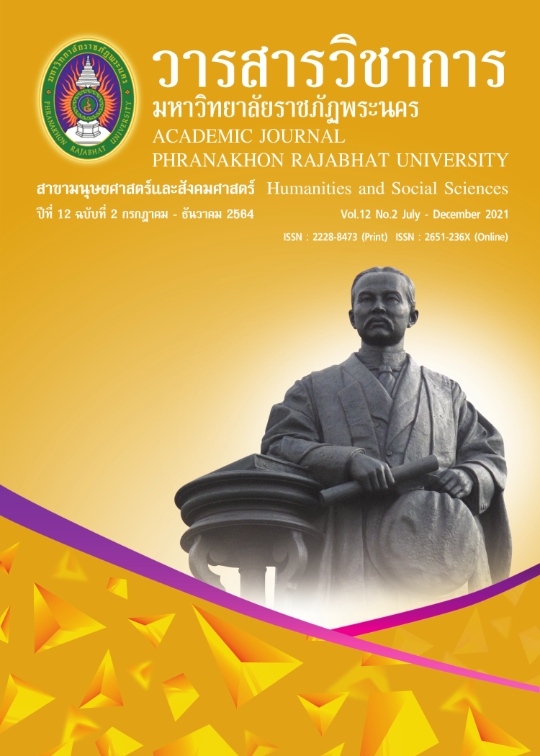ศักยภาพของดัชนีภูมิสารสนเทศจากข้อมูลดาวเทียมรายละเอียดสูงของประเทศไทย
คำสำคัญ:
ดัชนีภูมิสารสนเทศ, ศักยภาพของดัชนีภูมิสารสนเทศบทคัดย่อ
การศึกษาครั้งนี้มีวัตถุประสงค์ เพื่อประเมินศักยภาพของดัชนีภูมิสารสนเทศจากข้อมูลดาวเทียมรายละเอียดสูงของประเทศไทย กลุ่มตัวอย่างที่ใช้ในการวิจัย คือ ที่ดินที่สามารถใช้ประโยชน์เพื่อการต่าง ๆ จำนวน 17 ประเภท ผู้มีส่วนได้เสีย ประกอบด้วย กลุ่มผู้บริหาร กลุ่มผู้เชี่ยวชาญ กลุ่มนักปฏิบัติการ และกลุ่มนักวิชาการ จำนวน 250 คน และผู้เชี่ยวชาญด้านการจัดการดัชนีภูมิสารสนเทศ จำนวน 17 คน รวบรวมข้อมูลโดยใช้แบบสอบถามและแบบสัมภาษณ์ การวิเคราะห์ข้อมูลโดยการพรรณนา และการวิเคราะห์ความแปรปรวนแบบทางเดียว สถิติสำคัญที่ใช้ในการวิเคราะห์ข้อมูล ได้แก่ ค่าร้อยละ ค่าเฉลี่ย ส่วนเบี่ยงเบนมาตรฐาน ค่า F และค่า t ผลการวิจัยพบว่า ดัชนีภูมิสารสนเทศจากข้อมูลดาวเทียมรายละเอียดสูงของประเทศไทยส่วนใหญ่มีศักยภาพการจัดการในระดับมาก และมีความแตกต่างกันตามกลุ่มผู้ใช้ประโยชน์อย่างมีนัยสำคัญทางสถิติที่ระดับ .05 ดัชนีภูมิสารสนเทศจากข้อมูลดาวเทียมรายละเอียดสูง ที่พัฒนาที่เหมาะสมมากที่สุดที่จะนำไปใช้เพื่อการจัดการการใช้ประโยชน์ที่ดินของประเทศไทย ในด้านเศรษฐกิจ ด้านสังคม ด้านทรัพยากรธรรมชาติและสิ่งแวดล้อม และด้านวิชาการและการวิจัย
References
Cooper, H. & Lindsay, J. J. (1997). Research Synthesis & Meta-analysis. In Bickman, L. & Rog, D. J. (eds). Handbook of Applied Social Research Method. California: Sage Publication.
Jamornmann, U. (2001). The Research and Development OF Indicators, Criteria and Techniques for Internal and External Assessment in Thai Universities. Bangkok: The Thailand Research Fund. (in Thai)
Lizarazo, I. (2014). Urban Land Cover & Land Use Classification Using High Spatial Resolution Images & Spatial Metrics. Proceedings Workshop of the EARSeL SIG on Land Use & Land Cover. 2: 292-298.
OECD. (1994). Environmental Indicators. Paris: Organisation for Economic Cooperation & Development.
Office of the National Economic and Social Development Council. (2007). Sustainable Development Goals. Bangkok: Office of the National Economic and Social Development Council. (in Thai)
Segnestam, L. (2002). Indicators of Environment & Sustainable Development: Theories & Practical Experiences. Washington D.C.: The World Bank Environment Department.
Seyyed, B. H.; Ali, S.; Mohammad, H. N. G.; Hossein, S.; & Alireza, F. (2019) Land-Use/Land Cover Classification Analysis Using Pixel Based Methods: Case of Tarom City, Iran. International Transaction Journal of Engineering, Management, & Applied Sciences & Technologies. 10(12): 1-13.
Srisa-ard, B. (2002). Preliminary Research. Bangkok: Suveiriyasarn. (in Thai)
Surya, C.; Ramadhan, K.; Suprihatin; Suria, D.; Tarigan, & Hefni, E. (2019) Land Use Classification Based on Object and Pixel Using Landsat 8 OLI in Kendari City, Southeast Sulawesi Province, Indonesia. Earth and Environmental Science. 284: 1-10.
The National Research Council of Thailand. (2016). Draft of the Ninth National Research Policy and Strategy (2017-2021). Bangkok: The National Research Council of Thailand. (in Thai)
Thongtip, U. (2015). Remote Sensing Lab. Bangkok: Phranakhon Rajabhat University. (in Thai)
Yothongyot, M. & Swadesan, P. (2014). Sample Size Determination for Research. Bangkok: Research and Creative Activity Support Office. (in Thai)
Downloads
เผยแพร่แล้ว
How to Cite
ฉบับ
บท
License
"บทความวิชาการในวารสารฉบับนี้ ถือเป็นความรับผิดชอบของผู้เขียนเท่านั้น"
สงวนลิขสิทธิ์ตามพระราชบัญญัติลิขสิทธิ์



